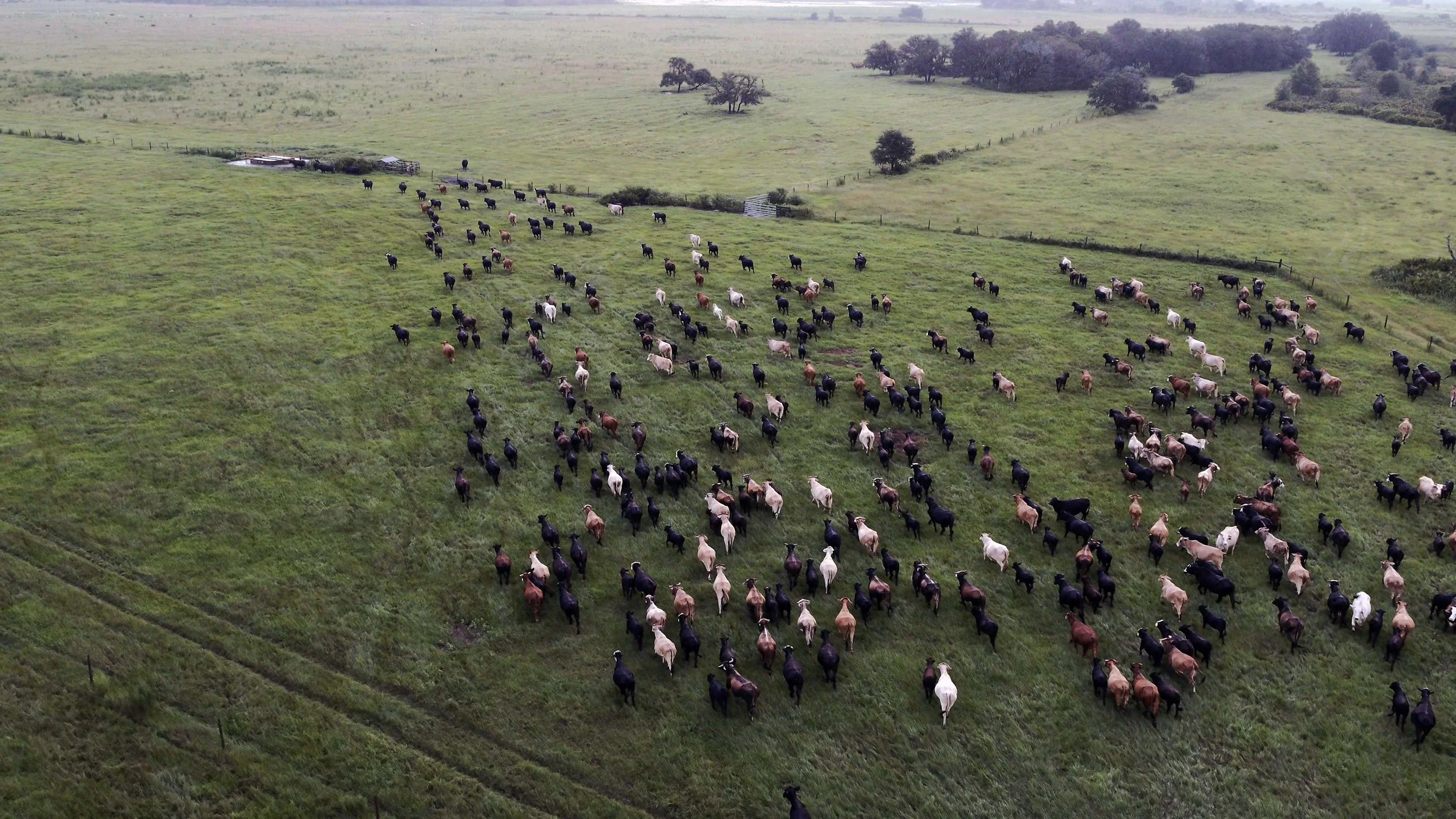Sustainable Beef Farms, a Family Ranch and Your Role in Sustainability
Not only is beef delicious and nutritious, but the beef industry continues to implement numerous proven sustainability practices throughout each and every step of the “pasture-to-plate” process that contribute to the way beef is responsibly raised today.
The path to sustainability is never complete. It is a continuous journey being carried out by farmers and ranchers responsible for raising and supplying beef to the U.S. and across the world. To the beef community, sustainability comprises much more than environmental considerations. Today, a sustainable food supply balances efficient production with environmental, social and economic impacts, and today’s beef farmers and ranchers are contributing to a more sustainable food supply.
THREE PILLARS OF SUSTAINABILITY
A sustainable food system consists of three different, but intersecting, pillars: social responsibility, economic viability and environmental stewardship. True sustainability is a balance of these three aspects. Beef farmers and ranchers are dedicated to producing beef in a way that prioritizes the planet, people, animals, and progress.
SOCIAL
Perhaps the least explored of the three pillars is social sustainability. We define this as community and organizational resilience, based on principles such as equity, health, social capital, and well-being. For beef production, social sustainability includes worker safety, animal welfare, antibiotic and technology use, and the culture and traditions of beef producers.
ECONOMIC
The economic pillar of sustainability refers to practices that support economic success and equitability, without negatively impacting the social and environmental aspects of the community. This includes improving rural economies & livelihoods, affordability of beef to consumers, profitability of beef producers, and the value of ecosystem services. Beef farms and ranches represent over 30% of the farms in the U.S., making up the single largest segment of U.S. agriculture, and a significant component of the agricultural economy.
ENVIRONMENTAL
This area is concerned with protecting and enhancing natural resources, ecosystem services, and ecological health. This pillar looks at biodiversity, carbon & water footprints, wildlife habitat, soil and rangeland health, and the ability of cattle to utilize human inedible feeds, among others.
BEYOND THE BEEF
Beyond delicious and nutritious steaks, roasts and burgers, there are hundreds of uses for cattle by-products. Do you own a car, take a bus or ride a bike? If so, you’re utilizing by-products in the tires on your vehicle and the asphalt on the road. Even items that may seem trivial, such as dyes, inks, adhesives and plastics are made from cattle by-products.
Here are a few ways in which cattle by-products touch our lives:
Hides from cattle are tanned into leather becoming shoes, purses, and wallets.
Cattle organs and glands are used in the production of medicine, insulation, antifreeze, shampoos/conditioners, and instrument strings. Some cattle tissue can even be used in
human heart valve surgeries!Photo film, vitamin capsules, charcoal, and glass are all derived from the bones and horns of cattle.
Inedible beef fat provides us with airplane lubricants, hydraulic brake fluid, biodiesel, and medicines.
Adam and his wife Dr. Jennifer Kauf along with their two children farm in Central Pennsylvania. Adam, an Animal Nutritionist by trade, and his wife, a Large Animal Veterinarian operate AJK
Ebony Farm, is a purebred Angus operation that believes in exceptional animal husbandry as well as environmental sustainability.
“Sustainability in beef production means wisely using our resources, be that natural or economic, in such a manner that we can maintain and support our land and families. We live on the land that we use for our cattle, and so we have a close relationship/attachment to that land. We find it to be a calling that we are able to provide a high quality, nutrient-dense food for our consumers, while also taking good stewardship of that land. The use of land for beef production in the east keeps it open and supports our abundant wildlife. Our use of rotational grazing in our cow-calf herd allows us to maximize the production of human-inedible forage (grass) resources to provide the majority of our cattle’s diet while improving the condition of our soils, minimizing soil loss, and protecting our downstream waterways.”
YOUR ROLE IN SUSTAINABILITY
Sustainability is never complete, and everyone has a role to play in helping create a more sustainable food supply. Approximately one-third of all food produced for human consumption in the world is lost or wasted, which places a substantial burden on global sustainability issues, including greenhouse gas emissions and food security. While 18% of food waste occurs at the restaurant and foodservice level, 43% of food waste occurs in the home.3
The food an average American family wastes translate into about $2,500 per year. According to the United States Department of Agriculture (USDA), beef is one of the least wasted foods, with 20% spoiled or not eaten, but that still leaves a lot of room for improvement! If beef waste were cut in half, the sustainability of the whole industry could be improved by 10%. Consider how you’ll use leftovers and make sure your appliances are running efficiently.
For more info on how to cut down on food waste, check out some great recipes using leftover beef.
Throughout the beef cycle, each sector continues to make efforts to improve its sustainability. Many of the ways in which cattle contribute to a sustainable food system incorporate inherent trade-offs, which are important to recognize when considering the sustainability of beef production, and its environmental, economic, and social contributions to society.
Please visit beefresearch.org for additional in-depth beef sustainability information.
Cow Valve Replacements: 5 Important Facts
ReFED. 2016. A roadmap to reduce US food waste by 20 percent.
12 Month - 6 issue subscription














Indulge in the taste spring with this delicious Cherry Galette